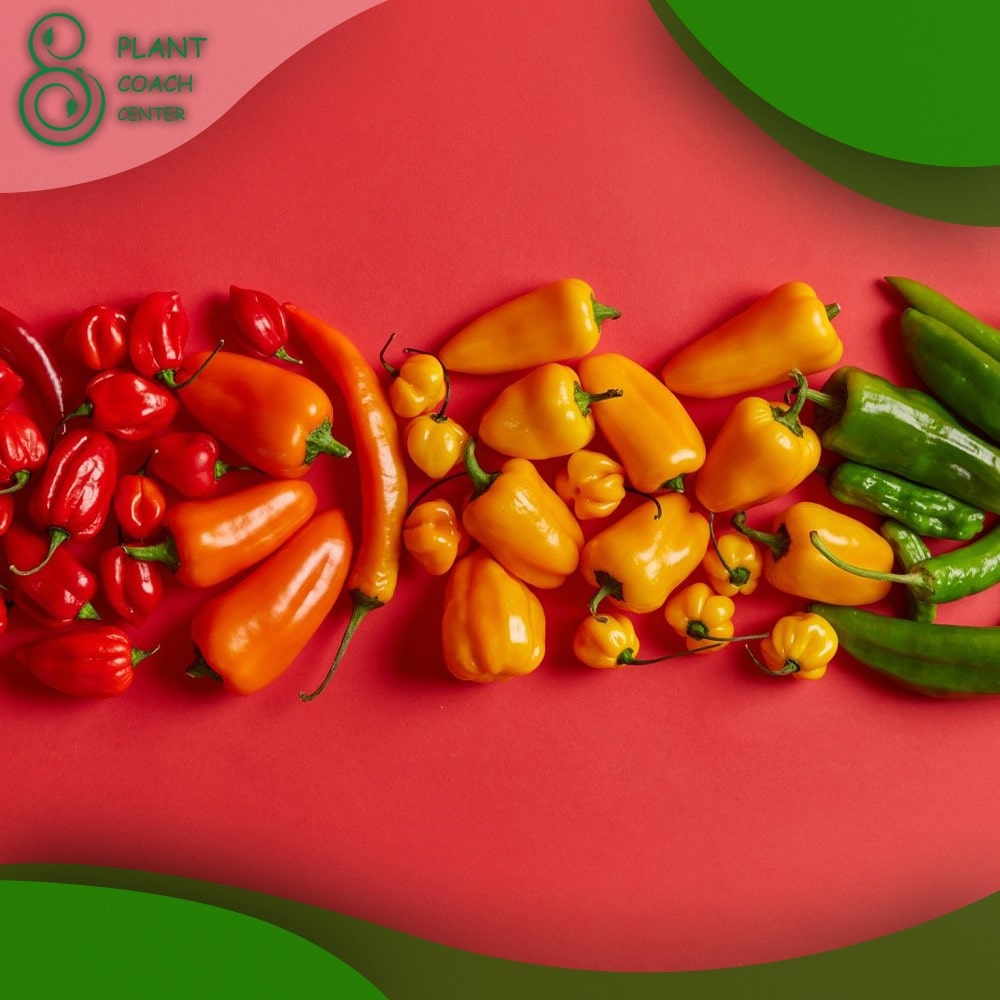When to Plant Chili Seeds
Introduction
Proper timing is crucial when it comes to planting chili seeds. Understanding the optimal conditions and suitable planting times can significantly enhance the success of your chili cultivation. In this comprehensive guide, we will explore the various factors that influence chili seed germination and provide detailed instructions on when and how to plant chili seeds.
The information presented here is based on expert advice from plantcoachcenter.com, a trusted resource for plant coaching and gardening expertise.
Understanding Chili Seeds and Their Germination Process
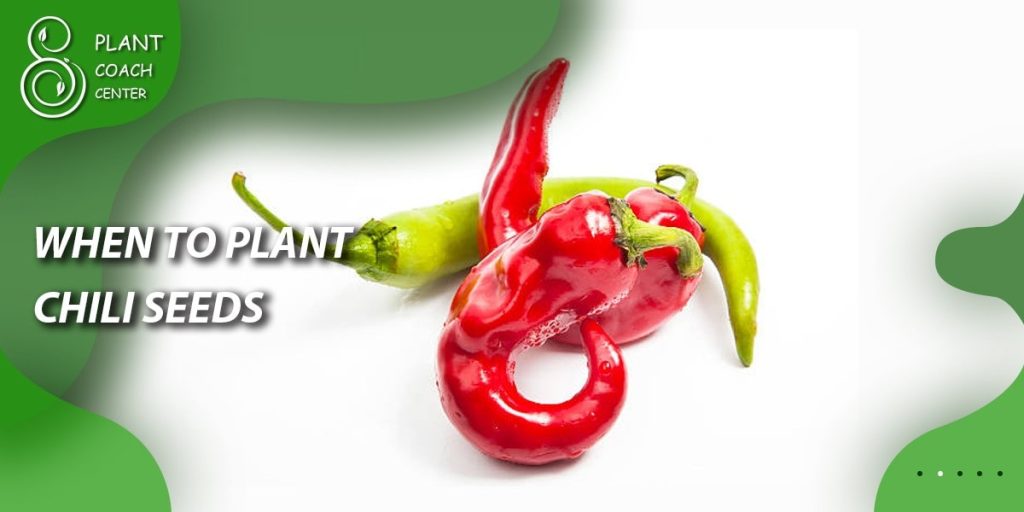
Chili seeds are the starting point for growing robust chili plants. Before delving into the best time to plant them, it’s essential to understand the structure of chili seeds and the factors that affect their germination.
The structure of chili seeds
Chili seeds are encapsulated within a protective seed coat. Inside the seed coat, there is an embryonic plant, consisting of the cotyledons (seed leaves) and the radicle (embryonic root). The seed contains all the necessary genetic information for plant development.
Factors affecting chili seed germination
Several factors can impact the germination of chili seeds. These include:
Temperature: Chili seeds require warm soil temperatures to germinate successfully. The optimal temperature range for chili seed germination is typically between 75°F and 85°F (24°C – 29°C).
Moisture: Adequate moisture is vital for seed germination. Dry conditions can hinder germination, while excessively wet conditions can lead to rotting.
Light: Most chili seeds do not require light for germination. In fact, some chili varieties prefer darkness during the germination process.
Seed quality: Using high-quality seeds from reputable sources increases the likelihood of successful germination.
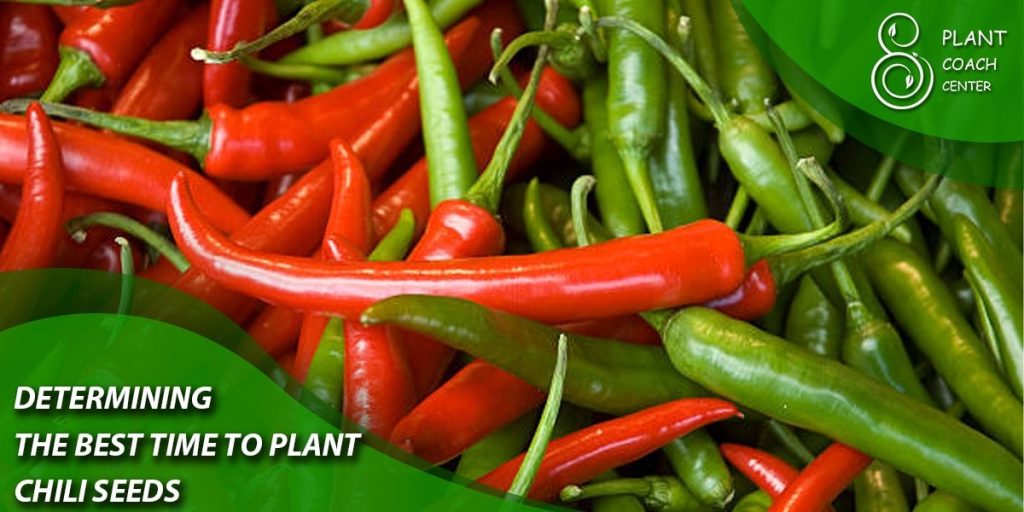
Determining the Best Time to Plant Chili Seeds
The best time to plant chili seeds depends on various factors, including your local climate, frost dates, and hardiness zones. Understanding these considerations will help you determine the optimal planting time for your region.
Climate considerations for chili cultivation
Chili plants thrive in warm climates, as they are native to tropical and subtropical regions. They require a long growing season with sufficient heat to produce abundant fruits. The ideal climate for chili cultivation is characterized by warm summers and mild winters.
Local frost dates and their significance
Frost can be detrimental to chili plants, particularly in the early stages of growth. Before planting chili seeds, it’s crucial to determine the average date of the last spring frost in your area. Planting chili seeds too early can expose them to frost damage, while planting them too late may result in a shortened growing season.
Referring to hardiness zones for planting time guidance
Hardiness zones provide valuable information about the climatic conditions in different regions. The United States Department of Agriculture (USDA) hardiness zone map, for example, divides the country into zones based on average winter temperatures. By identifying your specific hardiness zone, you can determine the appropriate planting time for chili seeds in your area.
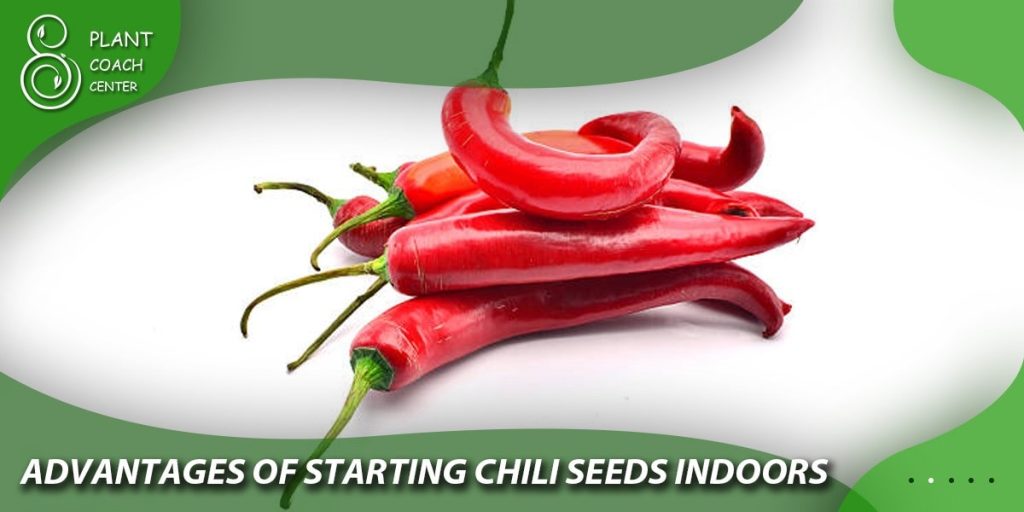
Advantages of starting chili seeds indoors
Starting chili seeds indoors offers several advantages:
Extended growing season: By starting seeds indoors, you can gain a few weeks or even a month of extra growing time, as the seedlings will be well-established when it’s time to transplant them outside.
Controlled environment: Indoor seed starting allows you to control temperature, humidity, and lighting conditions, ensuring optimal germination and early growth.
Creating a suitable indoor environment
To successfully start chili seeds indoors, follow these steps:
Select the right containers: Use seed trays, peat pots, or biodegradable seedling pots to provide ample space for root development.
Choose a suitable seed starting mix: Use a well-draining, sterile seed starting mix to ensure proper moisture retention and minimize the risk of disease.
Sow the seeds: Place 2-3 chili seeds in each container, at a depth of approximately 1/4 to 1/2 inch (6-12 mm). Moisten the soil lightly after sowing.
Provide warmth and moisture: Place the seeded containers in a warm location, ideally between 75°F and 85°F (24°C – 29°C). Use a propagator or cover the containers with plastic wrap to create a greenhouse-like environment that retains moisture.
Ensure adequate light: Chili seedlings require 12-16 hours of bright light daily. If natural light is insufficient, use fluorescent grow lights positioned a few inches above the seedlings.
Water carefully: Keep the soil consistently moist but avoid overwatering, as excessive moisture can lead to fungal diseases. Water the seedlings from the bottom to prevent waterlogging the soil.

Preparing the garden bed for chili seed planting
To prepare the garden bed for direct sowing chili seeds, follow these steps:
Choose a suitable location: Select a sunny spot in your garden with well-draining soil. Chilies thrive in full sun, so a minimum of 6-8 hours of direct sunlight per day is ideal.
Prepare the soil: Remove any weeds or debris from the planting area. Loosen the soil with a garden fork or tiller, incorporating organic matter such as compost or well-rotted manure to improve soil structure and fertility.
Create furrows or planting holes: Depending on the chili variety, create furrows or individual planting holes that are approximately 1/4 to 1/2 inch (6-12 mm) deep.
Sow the seeds: Place the chili seeds in the furrows or holes, spacing them according to the recommended seed packet instructions. Cover the seeds with soil and gently firm the soil over them.
Water thoroughly: After sowing, water the area gently but thoroughly to ensure good seed-to-soil contact and proper hydration.
Caring for chili seedlings in the garden
Once the chili seedlings emerge, follow these care guidelines:
Thinning seedlings: If the seeds were sown densely, thin the seedlings to the recommended spacing to provide adequate room for growth and airflow. This process involves removing weaker seedlings, leaving the healthiest and strongest ones.
Watering requirements: Water the seedlings regularly, keeping the soil consistently moist but not waterlogged. Aim to provide approximately 1 inch (2.5 cm) of water per week, adjusting as needed based on weather conditions.
Mulching the soil: Apply a layer of organic mulch around the seedlings to conserve moisture, suppress weed growth, and regulate soil temperature.
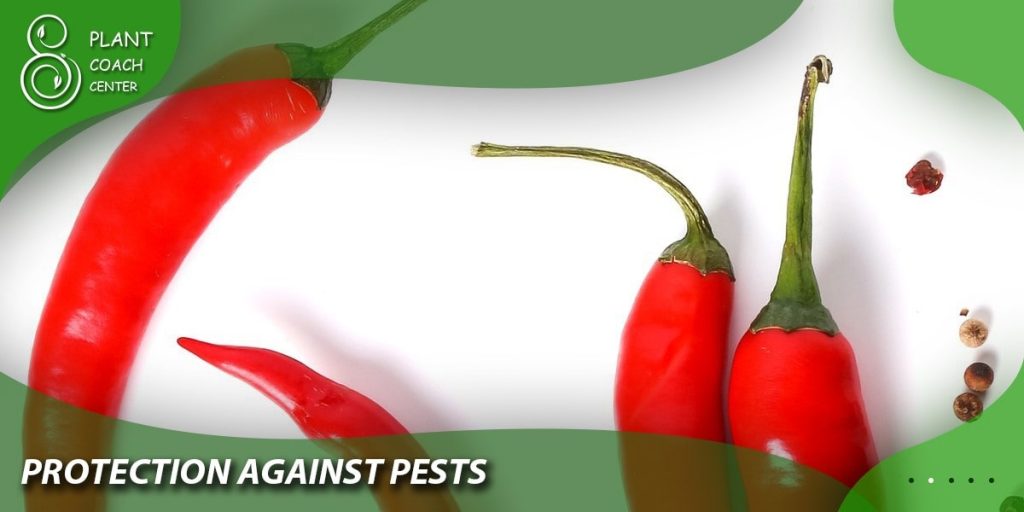
Protecting from pests: Monitor the seedlings for any signs of pest damage, such as chewed leaves or discolored foliage. Use organic pest control methods, such as handpicking pests or employing insecticidal soaps, if necessary.
Conclusion
In conclusion, planting chili seeds at the right time and providing proper care are key to successful cultivation. Whether starting indoors or sowing directly in the garden, ensuring optimal conditions for germination, monitoring for pests, and providing adequate water and sunlight will lead to healthy chili plants and a bountiful harvest.
Can I plant chili seeds directly in the garden?
Yes, direct sowing can be done in late spring when the soil has warmed up and frost is no longer a concern. Ensure proper soil preparation and follow recommended planting instructions.
What if I live in a region with a short growing season?
Consider starting chili seeds indoors to get a head start. Use techniques like container gardening and season extension methods to prolong the growing season and maximize chili production.
How do I know if chili seeds are viable?
Perform a germination test by placing a few seeds between damp paper towels. If a significant percentage of seeds sprout within the recommended time frame, they are likely viable.


